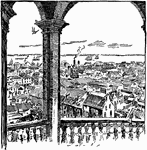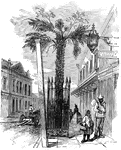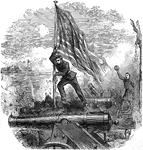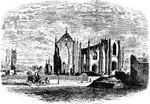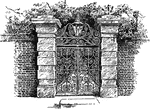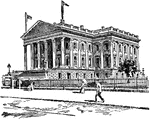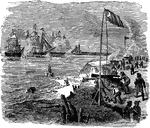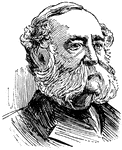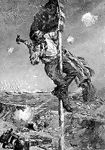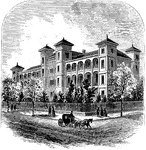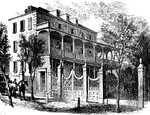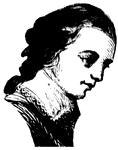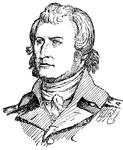The South Carolina ClipArt gallery includes 91 illustrations related to the Palmetto State.

13 Star United States Flag, 1776
Color illustration of a 13 Star United States flag. The original 13 stars represent the states of Delaware,…

13 Star United States Flag, 1776
Black line illustration of a 13 Star United States flag. The original 13 stars represent the states…
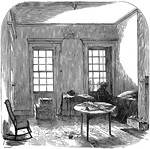
Major Anderson's Headquarters
The headquarters of Major Robert Anderson at Fort Sumter, South Carolina during the American Civil War.

United States Arsenal at Charleston
At the time this picture was drawn the handsome arsenal of the government of Charleston, South Carolina,…
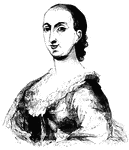
Rebecca Brewton
(--1815) American Patriot who helped troops in South Carolina during the Revolutionary War.
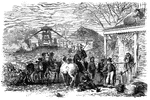
Bummers
"Sherman's 'Bummers' foraging in South Carolina. Our artist sent us with this sketch of 'Bummers Foraging'…

John C. Calhoun
(1782-1850) Seventh vice-president and first vice-president born as a United States citizen.
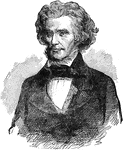
John C. Calhoun
A portrait of John C. Calhoun, one of the leading United States Southern politicians and philosopher…
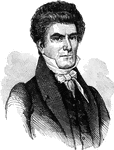
John Caldwell Calhoun
John Caldwell Calhoun (March 18, 1782 – March 31, 1850) was a leading United States Southern politician…
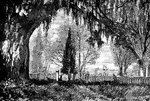
Magnolia Cemetery
An illustration of Magnolia Cemetery located in Charleston, South Carolina. Approximately 35,000 people…

Charleston
"Seacoast operations against Charleston- brilliant dash and capture of Confederate rifle pits and prisoners…
Charleston Harbor
"The harbor of Charleston, S. C.- Fort Moultrie, on Sullivan's Island."— Frank Leslie, 1896

Advance upon Charleston
"The advance upon Charleston, S. C.- pioneer movement- landing of the One Hundredth New York Volunteers…
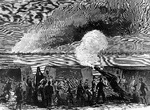
Siege of Charleston
"Siege of Charleston- the doomed city fired by Gillmore's explosive shells from Fort Putnam, January…

Civil War Banner in South Carolina
"Street banner in Charleston, before the Civil War began."—E. Benjamin Andrews 1895

Cliff overlooking Tugaloo River
An illustration of a cliff over looking the Tugaloo river. The Tugaloo River is a short river bordering…

Prison Pen at Columbia
"Appearance of the prison pen at Columbia, S. C., on the arrival of Sherman's army."— Frank Leslie,…
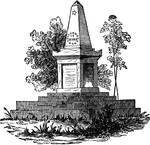
Baron de Kalb's Monument
Monument to Johann von Robaii, Baron de Kalb a German soldier and volunteer who served as a major general…
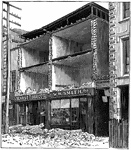
Results of the Earthquake in Charleston S.C., Aug. 31, 1886
On August 31, 1886, Charleston was nearly destroyed by an earthquake measuring 7.5 on the Richter scale…
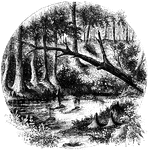
Eutaw Spring
"Eutaw Spring, where there was a conflict during the American Revolution."—Lossing, 1851

Fort Sumter
The fort is best known as the site where the shots initiating the American Civil War were fired, at…
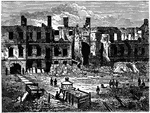
Inside the Walls of Fort Sumter
The fort is best known as the site where the shots initiating the American Civil War were fired, at…

Fort Sumter in 1864
The fort is best known as the site where the shots initiating the American Civil War were fired, at…
General Hospital Exterior
"United States General Hospital, Hilton Head, S. C., exterior. The United States General Hospital at…

General Hospital Interior
"United States General Hospital, Hilton Head, S. C., interior. The United States General Hospital at…

Grand Skedaddle
"The 'Grand Skedaddle' of the inhabitants from Charleston, S. C., when threatened by an attack from…
Hilton Head
"Expedition to Port Royal- Government buildings erected on Hilton Head, S. C., by the Federal forces…

Hilton Head
"Expedition to Port Royal- Government buildings erected on Hilton Head, S. C., by the Federal forces…

James Island
"Repulse of the Confederates at James Island, near Charleston, S. C., June 10th, 1862, in the attempt…
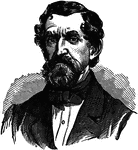
David F. Jamison
David F. Jamison (1810-1864) was one of the founders of the Citadel and was elected president of the…
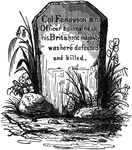
Monument on King's Mountain
The Battle of Kings Mountain, October 7, 1780, was an important Patriot victory in the Southern campaign…
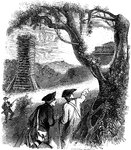
Marion and Lee Capturing Fort Watson
"Marion and Lee could see the light of his camp-fires on the hills in the west. Whatever was done must…

Morning Detail
"The morning detail of the Fourth New Hampshire Volunteers going to work on the Hilton Head Fortifications.…
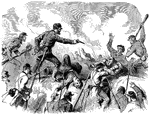
Lieutenant Colonel Morrison
"Heroic conduct of Lieutenant Colonel Morrison, Seventy-Ninth New York Highlanders, on the parapet of…
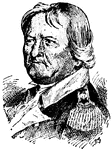
William Moultrie
(1730-1805) Soldier and governor of South Carolina during the American Revolutionary war.



